Adam Mickiewicz University in Poznań
|
Universitas Studiorum Mickiewicziana Posnaniensis | |
 | |
Former names |
University of Poznań University of the Western Lands |
|---|---|
| Type | Public |
| Established | 1919 (99 years ago) |
| Rector | Prof. Andrzej Lesicki |
Administrative staff | 5,286[1] |
| Students | 40,697[1] |
| Location | Poznań, Poland |
| Affiliations | EUA, EUCEN, CGU, SGroup |
| Website |
international |
Adam Mickiewicz University in Poznań (Polish: Uniwersytet im. Adama Mickiewicza w Poznaniu, Polish abbreviation UAM) is one of the major Polish universities, located in the city of Poznań, Greater Poland, in the west of the country. It traces its origins to 1611[2] and officially opened on May 7, 1919. Since 1955 it has carried the name of the Polish Romantic poet Adam Mickiewicz. The university has been frequently listed as a top three university in the country.[3][4]
In 2017, Times Higher Education ranked the university within the 801-1000 band globally.[5]
History
The university was ceremonially opened on May 7, 1919 (the 400th anniversary of the foundation of Poznań's Lubrański Academy). It was originally called Wszechnica Piastowska ("University of the Piasts" – wszechnica being a less common Polish word for "university"), and in 1920 was renamed Uniwersytet Poznański ("Poznań University"). For the first 20 years it educated students in law, economy, medicine, humanities, mathematics, natural sciences, agriculture and forestry.
In 1920 famous sociologist Florian Znaniecki founded the first Polish department of sociology at the university, one of the first such departments in Europe. In the same period of the university's history, botanist Józef Paczoski founded the world's first institute of phytosociology.
After the invasion of Poland, Poznań was annexed by Germany and the University was closed by the Nazis in 1939. It was reopened as a German university in 1941, which operated until 1944. Staff and students of the Polish university, some of them expelled by Germans to Warsaw, opened an underground Polish "University of the Western Territories" (Uniwersytet Ziem Zachodnich), whose classes met in private apartments (see Education in Poland during World War II). Many of the professors and staff were imprisoned and executed in Fort VII in Poznań, including professor Stanisław Pawłowski (rector in the years 1932-33).[6] The Polish university reopened, in much smaller form, after the end of World War II. In 1950, the Medical Faculty, including the Dentistry section and the Faculty of Pharmacy, were split off to form a separate institution, now the Poznań University of Medical Sciences. In 1955 Uniwersytet Poznański adopted a new patron, the 19th-century Polish Romantic poet Adam Mickiewicz, and changed to its current name.
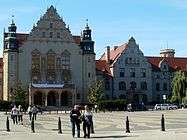


Sites
The university's central administrative building is Collegium Minus, on the west side of Adam Mickiewicz Square at the western end of the street Święty Marcin. (This is one of a group of buildings, including the Imperial Palace, built in the first decade of the 20th century while Poznań was still under German rule; it originally housed a Royal Academy.) Adjoining this is the Aula, which is frequently used for ceremonies and for classical music concerts, and Collegium Iuridicum (accommodating the law faculty). Some teaching takes place in Collegium Maius, another of the aforementioned group of buildings (on ul. Fredry), although this is mainly used by the medical university. Other buildings in the city centre include former communist party headquarters on Święty Marcin, Collegium Novum (used mainly for language teaching) on Al. Niepodległości, and the university library on ul. Ratajczaka.
The university also uses a number of other buildings in southern and western districts of Poznań. However it is strongly developing its site at Morasko in the north of the city. As of 2006, the faculties of physics, mathematics and computer science, biology, geographical and geological science had moved to the new location. In 2015 they were joined by the faculty of history (Collegium Historicum Novum).[7]
The university also has external branches in other towns of western Poland, including Kalisz, Ostrów Wielkopolski and Słubice.
Staff and student numbers
At the start of the 2008/2009 academic year, the university had 46,817 undergraduates (including about 18,000 on weekend or evening courses), 1308 doctoral students, and 2247 other post-graduate students. The number of undergraduates declined slightly between 2005 and 2008.[8]
At the end of 2008, the university had a total of 2892 teaching staff, including 257 full professors and 490 associate/assistant professors. It also had 2120 other employees.[9]
Degrees and faculties
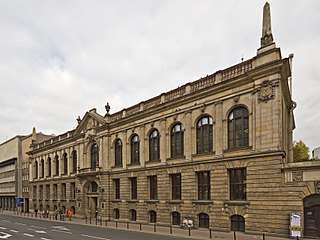

Like most Polish universities, Adam Mickiewicz University awards the following degrees:
- licencjat, normally a three-year course, sometimes considered equivalent to a Bachelor of Arts or Bachelor of Science degree
- magister, normally a two-year course following the licencjat, considered equivalent to a Master of Arts or Master of Science degree
- doctorates
- habilitations
The university has the following faculties:
- Faculty of English
- Faculty of Biology
- Faculty of Chemistry
- Faculty of Educational Studies
- Faculty of Geographical and Geological Sciences
- Faculty of History
- Faculty of Law and Administration
- Faculty of Mathematics and Computer Science
- Faculty of Modern Languages and Literature
- Faculty of Physics
- Faculty of Polish and Classical Philology
- Faculty of Political Science and Journalism
- Faculty of Social Sciences and Philosophy
- Faculty of Theology
- Faculty of Pedagogy and Fine Arts, in Kalisz
Notable alumni and honorary doctors
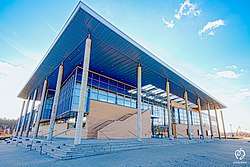
Among the University's most famous graduates are:
- Stanisław Barańczak (1946-2014), poet and translator, Nike Award laureate
- Bogumił Brzezinski (b. 1943), chemist
- Franciszek Gągor (1951-2010), general, Chief of the General Staff of the Polish Armed Forces
- Krzysztof Grabowski (b. 1965), poet and singer
- Maciej Henneberg (b. 1949), Polish-Australian anatomist and communist-era dissident
- Kazimiera Iłłakowiczówna (1892-1983), poet, prose writer, playwright and translator
- Anna Jantar (1950-1980), singer
- Tomasz Jasiński (b. 1951), historian
- Jan A. P. Kaczmarek (b. 1953), Academy Award-winning composer
- Max Kolonko (b. 1965), Polish-American producer, writer, author and broadcast journalist
- Włodzimierz Kołos (1928-1996), chemist and physicist, one of the founders of modern quantum chemistry
- Ryszard Krynicki (b. 1943), poet and translator
- Jan Kulczyk (1950-2015), businessman and billionaire
- Tomasz Łuczak (b. 1963), mathematician
- Crocheted Olek (b. 1978), New York-based Polish-American artist
- Halszka Osmólska (1930-2008), paleontologist
- Kazimierz Marcinkiewicz (b. 1959), conservative politician, former Prime Minister of Poland
- Adam Michnik (b. 1946), journalist and communist-era dissident
- Julia Przyłębska (b. 1959), lawyer, President of the Constitutional Tribunal of Poland
- Krzysztof Skubiszewski (1926-2010), politician, former Minister of Foreign Affairs of Poland
- Hanna Suchocka (b. 1946), politician, the first female Prime Minister of Poland
- Marian Rejewski (1905-1980), mathematician involved in breaking the Enigma machine
- Jerzy Różycki (1909-1942), mathematician involved in breaking the Enigma machine
- Jerzy Waldorff (1910-1999), TV personality, writer, publicist and literary critic
- Jan Węglarz (b. 1947), computer scientist
- Henryk Zygalski (1908-1978), mathematician involved in breaking the Enigma machine
Recipients of honorary doctorates from the University include Marshal Józef Piłsudski, Marshal Ferdinand Foch, Marie Curie, Ignacy Paderewski, Roman Dmowski, Witold Hensel, Wisława Szymborska, Ernst Håkon Jahr, Al Gore and John Maxwell Coetzee.
List of rectors
- 1919–1923: Heliodor Święcicki (1854–1923), doctor and philanthropist
- 1923–1924: Zygmunt Lisowski (1880–1955), lawyer
- 1924–1925: Stanisław Dobrzycki (1875–1931), Slavic language specialist
- 1925–1926: Ludwik Sitowski (1880–1947), zoologist
- 1926–1928: Jan Gabriel Grochmalicki (1883–1936), zoologist
- 1928–1929: Edward Lubicz-Niezabitowski (1875–1946), doctor and zoologist
- 1929–1931: Stanisław Kasznica (1874–1958), lawyer
- 1931–1932: Jan Sajdak (1882–1967), classical philologist
- 1932–1933: Stanisław Pawłowski (1882–1940), geographer
- 1933–1936: Stanisław Runge (1888–1953), veterinarian
- 1936–1939: Antoni Peretiatkowicz (1884–1956), lawyer
- 1939: Bronisław Niklewski (1879–1961), plant physiologist
- 1945–1946: Stefan Tytus Dąbrowski (1877–1947), doctor and physiologist
- 1946–1948: Stefan Błachowski (1889–1962), psychologist
- 1948–1952: Kazimierz Ajdukiewicz (1890–1963), philosopher and logician
- 1952–1956: Jerzy Suszko (1889–1972), chemist
- 1956–1962: Alfons Klafkowski (1912–1992), lawyer
- 1962–1965: Gerard Labuda (1916–2010), historian
- 1965–1972: Czesław Łuczak (1922–2002), historian
- 1972–1981: Benon Miśkiewicz (1930–2008), historian
- 1981–1982: Janusz Ziółkowski (1924–2000), economist and sociologist
- 1982–1984: Zbigniew Radwański (born 1924), lawyer
- 1984–1985: Franciszek Kaczmarek (born 1928), physicist and mathematician
- 1985–1988: Jacek Fisiak (born 1936), English language specialist
- 1988–1990: Bogdan Marciniec (born 1941), chemist
- 1990–1996: Jerzy Fedorowski (born 1934), geologist
- 1996–2002: Stefan Jurga (born 1946), physicist
- 2002–2008: Stanisław Lorenc (born 1943), geologist
- 2008–2016: Bronisław Marciniak (born 1950), chemist
- 2016– : Andrzej Lesicki (born 1950), biologist
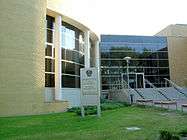

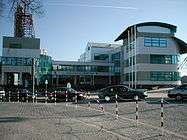
International cooperation
- Christian-Albrechts-Universität zu Kiel, Germany
- Otto-Friedrich-Universität Bamberg, Germany
- University of Greifswald, Germany
- Universität Wien, Austria
- Masaryk University, Brno, Czech Republic
- Université Libre de Bruxelles, Belgium
- University of Rennes 2 – Upper Brittany, France
- Universidad Complutense de Madrid, Spain
- Indiana University of Pennsylvania, Pennsylvania, US
- Cornell University Ithaca, New York, US
- Università degli Studi di Udine, Italy
- Università degli Studi di Urbino, Italy
- Escola Superior de Hotelaria e Turismo do Estoril, Portugal
- Sabanci University, Istanbul, Turkey
- Universidade de Aveiro, Portugal
- Agder University, Norway
- Dogus University, Istanbul, Turkey
- Anadolu University, Eskisehir, Turkey
- Balikesir University, Balikesir, Turkey
- Cukurova University, Adana, Turkey
See also
References
- 1 2 "Stan zatrudnienia i liczba studiujących w Uniwersytecie im. Adama Mickiewicza w Poznaniu" (in Polish). Biuletyn Informacji Publicznej. Retrieved 2018-01-19.
- ↑ "History". Retrieved 2017-11-26.
- ↑ http://www.perspektywy.pl/RSW2015/ranking-uczelni-akademickich
- ↑ http://www.polskieradio.pl/5/3/Artykul/1458122,Ranking-uniwersytetow-To-najlepsze-uczelnie-w-Polsce
- ↑ World University Rankings 2017-2018
- ↑ Wardełski, Adam (2011). "Prof. Stanisław Pawłowski (film)". Filmoteka UAM (in Polish). Retrieved 29 December 2014.
- ↑ "Wydział Historyczny - O Wydziale". wydzial.historyczny.amu.edu.pl. Retrieved 2016-07-10.
- ↑ Rector's Report 2008, p. 25 ff.
- ↑ Rector's Report 2008, p. 51 ff. and Appendix 10
External links
- Official website (in English)
- Official website (in Polish)
| Wikimedia Commons has media related to Adam Mickiewicz University. |
Coordinates: 52°24′28″N 16°54′56″E / 52.40778°N 16.91556°E